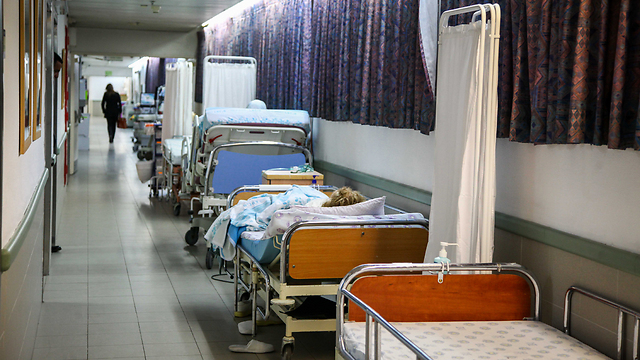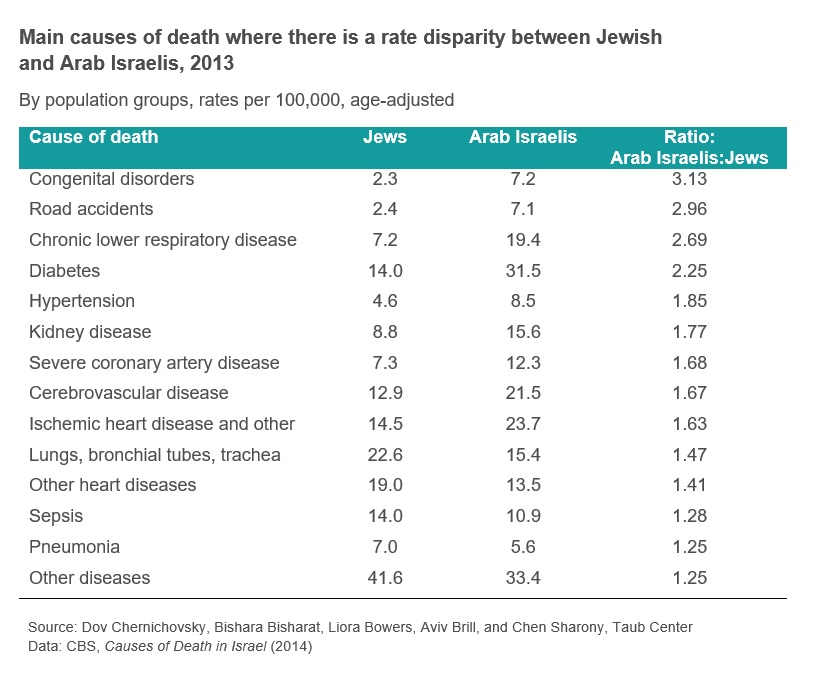
Taub Center report shows discrepancy in Jewish, Arab life expectancy
Research center releases report delineating status of Israel's health, education and welfare systems: Reasons for life expectancy, infant mortality differences between Jews, Arabs and the explanation behind Israel's high price levels.
The Taub Center for Social Policy Studies in Israel published its annual State of the Nation report on the country's health, education, welfare and housing systems on Wednesday. The life expectancy of Israel's Arab population was 79 years, the report said, higher than that of the Arab-Muslim world.
Israeli-Arabs' life expectancy was lower, however, than that of Israeli Jews—which is 82.7—and the developed countries' average of 81.6.
Marked differences also existed between Israel's populations when it came to infant mortality. While the Jewish infant mortality rate was 2.7 deaths per 1,000 births, the Druze rate was 3.4, 3 among Christians and 7.5 among Muslims. Despite possessing the highest infant mortality rate among Israel's different populations, the rate is still lower than that of other Arab and Muslim countries.
The most common causes of death also vary between Jews and Arabs. Congenital disorders, traffic and work-related accidents and a relatively high rate of chronic illnesses were the most prominent causes of death in Israel's Arab population.
Prof. Dov Chernichovsky, Bishara Bisharat, Liora Bowers, Aviv Brill, and Chen Sharony, who conducted the research, speculated the differences in causes of death stemmed from differences in the Arab population's social patterns, such as marriage between relatives, which raise the likelihood of congenital disorders, and the relatively high rate of smoking—44 percent of Arab men smoke compared to only 22 percent of Jewish men.
Districts with a high concentration of Arab population—Haifa, Jerusalem and the northern regions—exhibited a severe lack of doctors, nursing personnel and medical equipment, the report showed. In addition, the average distance to a hospital in Arab communities was 22 kilometers, compared to 14 kilometers in Jewish communities.
Local price levels
The high Israeli cost of living compared to a relatively low quality of life has been the subject of fierce debate since the 2011 social protests that swept through the country.
Cost of living and quality of life are two pieces of data the influence each other and shape the lives of most Israelis. When the average wage is translated into private sector purchasing power, a rather grim image begins to emerge.
The Taub Center's report showed that the annual income of an average Israeli employee—when translated to purchasing power—is lower compared to most countries the report examined, even countries poorer than Israel in terms of income translated to current prices.
The gap between the data and its translation into purchasing power may be explained by examining the Israeli economy's high price levels.
"As a general rule, price levels are poorer countries are relatively low, which makes per capita income in terms of purchasing power higher than the dollar income," the report stated.
The same ratio can be observed in richer countries as well, where income in terms of purchasing power is usually lower than the dollar income due to the higher price of consumer goods.
In Israel, however, the trends are reversed. Despite the low per capita income, price levels are exceedingly high, thereby pulling income down even further and making it much lower in terms of purchasing power.
"The economy's good standing contributes to the shekel's strength, which constitutes the main reason for price levels that are higher compared to other countries. The shekel's revaluation contributes to local price level hikes in terms of foreign currency, and the exchange rate therefore plays a central role in the above price comparisons," the Taub Center claimed.
The report's data showed that "dependency on the exchange rate created a paradoxical situation: when the state of the economy improves local price levels rise compared to other countries, which gives the impression Israel's cost of living rises as well."
The report therefore surmised that "Israeli price levels exceeded that of most other countries during the two periods of measurements (2000-2016 and 1995-2007), when taking into account that the per capita income in the country is relatively low. This begs the conclusion that Israel's high price level is not a new phenomenon, and cannot be explained merely by attribution to the revaluation of the past few years."
Rotem Elizera, Shahar Hay and Amir Alon contributed to this report.




















